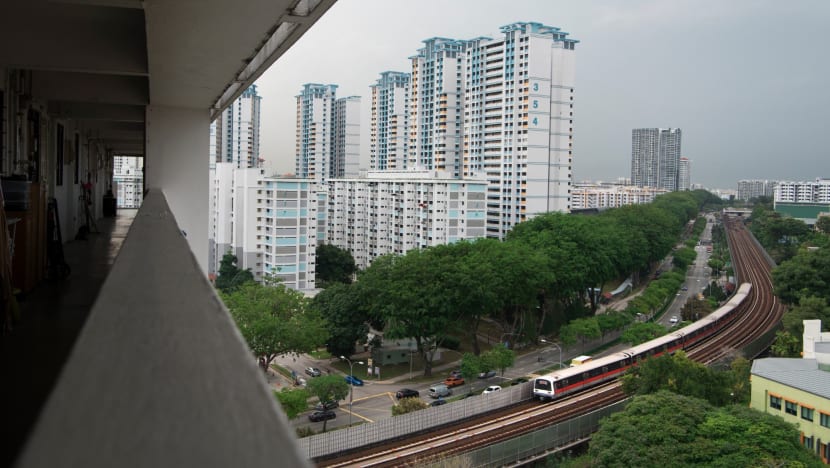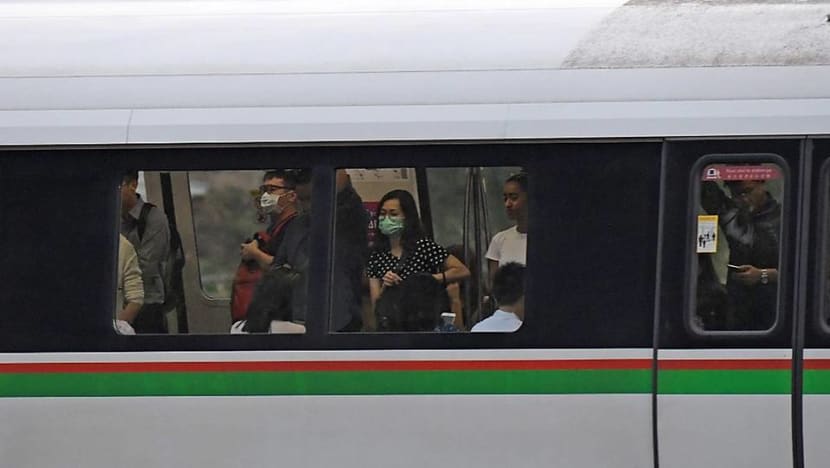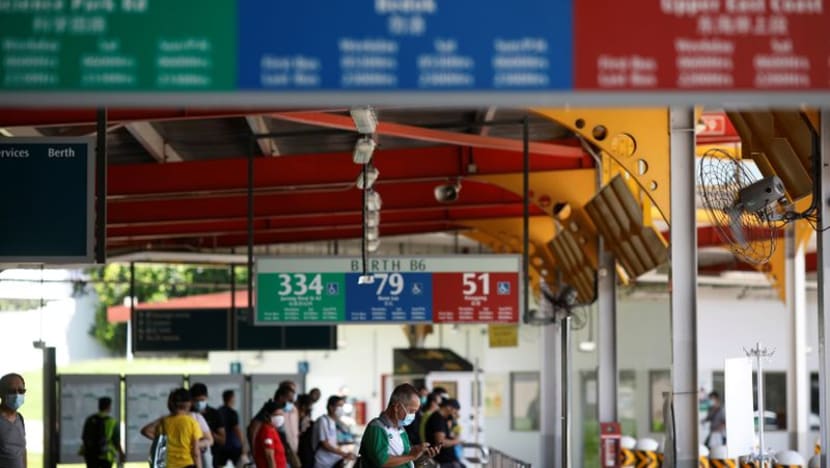Travelling or telecommuting – how COVID-19 could affect public transport costs in Singapore

A commuter wearing a face mask at an MRT station in Singapore on Mar 18, 2020. (File photo: Catherine LAI/AFP)
SINGAPORE: It could be more expensive to take the bus or train in future if telecommuting becomes the norm in the long term, even after the COVID-19 pandemic dies down.
Lower ridership means a drop in fare revenues for operators. They may eventually have to adjust fares or rely on more government subsidies to ensure that public transport continues running, said experts.
The issue of costs and funding would also “depend critically” on how long safe distancing measures would be implemented on buses and trains, said Associate Professor Theseira, who heads the Singapore University of Social Science’s master of urban transport management programme.
“What is affecting financing is safe distancing, because it forces us to operate a full schedule of services but with very low ridership per service run,” he said. “There is no way for any public transport system to break even with low ridership on board each vehicle.”
Transport Minister Khaw Boon Wan had said earlier in May that fare revenues have dropped by about 80 per cent during the COVID-19 pandemic, putting transport operators under “significant financial stress”.
He noted that even as ridership has fallen, public transport operators have had to spend on additional cleaning and on deploying people to ensure safe distancing.
Additional costs incurred by operators are not "adequately covered" by current fares and will "eventually have to be borne by operators and taxpayers", Mr Khaw added.
READ: Additional costs incurred by public transport operators due to COVID-19 not 'adequately covered' by fares: Khaw Boon Wan
Public transport operators will have to cover some of the shortfall on their own and depend on more subsidies from the Government for the time being, said transport engineering consultant Gopinath Menon.
“Fares may need to eventually rise so that the commuters also contribute their share instead of just the public transport operators and the Government,” he added.

In the longer term, however, changes may have to be made to the pricing policy.
“We have to look at a combination of pricing policy - not so much fare increases, but perhaps trying to spread out travel more - and perhaps other means of cost recovery such as earmarked taxes or charges,” said Assoc Prof Theseira.
“For example, public transport in many cities is financed specifically from local taxes from businesses that benefit the most from public transport connectivity, such as those within some distance of train stations,” he pointed out.
PREVENTING TRANSMISSION ON PUBLIC TRANSPORT
For commuters returning to work or school, they will have to be mindful of safe distancing rules.
Experts note that measures to prevent crowding on buses and trains may be challenging to enforce after the circuit breaker period ends on Jun 1.
That is why it is compulsory for commuters to wear masks.
READ: Safe distancing on public transport to 'largely remain in place' after COVID-19 circuit breaker ends
They should also avoid talking on the phone or to one another, noted Professor Teo Yik Ying, dean of the National University of Singapore's Saw Swee Hock School of Public Health.
“These measures are aimed to minimise people from producing aerosolised droplets that go on to infect others or settle on surfaces,” said Prof Teo.
“If there is very little contact between people and no conversation, then the chance of droplets being expelled will be significantly reduced, and this in turn reduces the risk of infection to fellow commuters.”

Other ways to prevent the spread of COVID-19 on public transport could include the regular testing of frontline workers such as drivers, as well as increasing the frequency of buses and trains, although Prof Teo noted that this would increase operating costs substantially.
RETHINKING TRANSPORT
As an alternative to crowded mass transit, some countries, including Italy and Colombia, are turning to cycling as a mode of transport.
France is investing 20 million euros (S$31 million) in subsidising bicycle travel, while Britain has announced an ambitious £2 billion plan to promote “active travel” modes such as cycling and walking.
While Singapore has its own initiative to encourage cycling - the Government plans to invest more than S$1 billion on cycling paths over the next decade - Assoc Prof Theseira believes cycling is not yet a “realistic alternative” for most commuters because of the long distances between population centres and workplaces, as well as the lack of dedicated cycling paths connecting the two.
READ: London streets to go car-free to encourage walking and cycling amid COVID-19 social distancing restrictions
Singapore should continue to invest in public transport infrastructure, even if ridership were to decline in the longer term, said Assoc Prof Theseira.
“Extensiveness of the network is different from intensity of services. We need an extensive network so that you don't need private transport and to provide redundancy,” he explained. “However, service frequency and intensity could be adjusted to save costs.”

Transport consultant Mr Menon believes the coronavirus outbreak is an “opportune time” to review Singapore’s overall transport policies.
Such a review should consider the provision of additional bus lanes and cycling lanes, and taking away lanes for motor vehicles, he added.
“Otherwise, we go back to the old system where the cars still dominate, with nothing having been changed, and the pollution levels return.”
In the longer term, Mr Menon hopes concerns over COVID-19 will also lead to greater decentralisation in urban planning - so people will be able to travel shorter distances for work and leisure - in addition to telecommuting and more flexible work arrangements.
READ: Commentary: Do you really want to work from home forever like some Twitter employees can?
The long term increase in adoption of telecommuting in response to COVID-19 would be a “great thing for everyone”, said Assoc Prof Theseira.
“Travel is actually economically inefficient. What we gain from economic activities around travel - such as supply of transport services, fuel and so on - is far outstripped by the value destruction from congestion, consumption of fossil fuels, environmental harm, time wasted,” he said.
There would however be adjustment costs, he noted, pointing to the impact of reduced demand on the taxi and private-hire car sectors.
“But while these costs may be painful to pay, a sustained reduction in local travel demand will eventually be better for the economy, because doing business without a need to physically travel is much more efficient,” he said.
BOOKMARK THIS: Our comprehensive coverage of the coronavirus outbreak and its developments
Download our app or subscribe to our Telegram channel for the latest updates on the coronavirus outbreak: https://cna.asia/telegram














